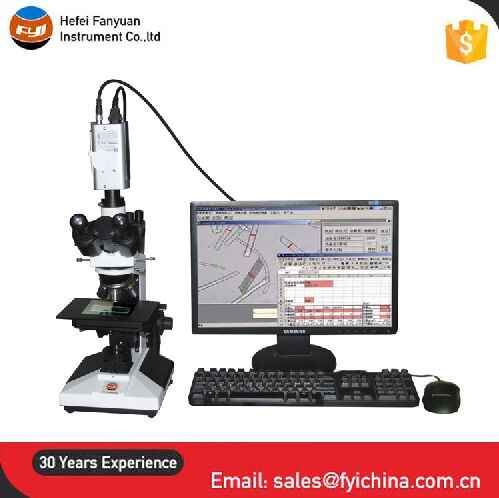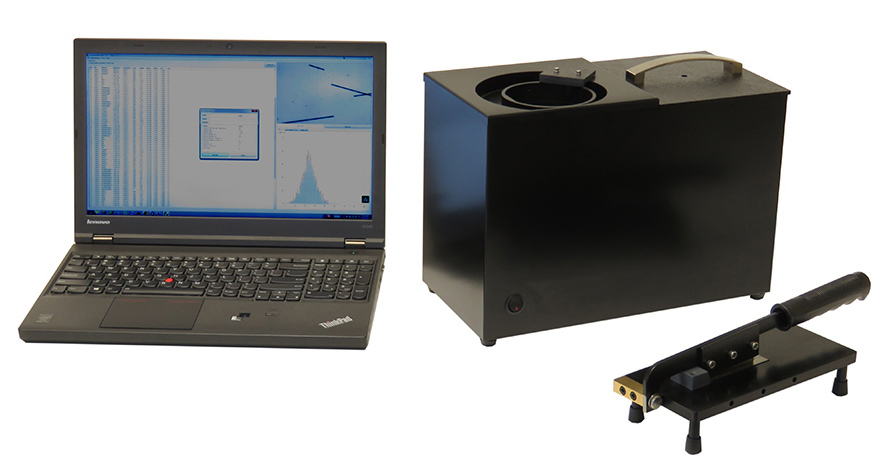Optimize Your Fiber Optic Efficiency: Understanding Optical Fiber Diameter Analyser Innovation
The performance of fibre optic systems is seriously influenced by the accuracy of their diameter, an aspect usually overlooked in the quest of optimum signal honesty. Comprehending the innovation behind optical fiber diameter analysers reveals the detailed balance between dimension precision and production quality.
Significance of Optical Fiber Size
The size of optical fiber plays a critical duty in figuring out the performance and effectiveness of communication systems. Alternatively, smaller sized sizes have a tendency to support fewer settings, which can boost signal clearness and lower crosstalk.

Furthermore, recognizing the diameter's effects can lead to set you back financial savings by lowering the need for signal boosting and repeaters in extensive networks (optical fibre diameter analyser). Finally, the value of optical fibre size can not be overemphasized, as it directly influences the overall efficiency and integrity of modern-day communication systems

Exactly How Size Influences Signal Quality
Signal high quality in optical fibre systems pivots dramatically on the size of the fibre. The size affects numerous essential parameters, including attenuation, transmission capacity, and modal dispersion. A smaller sized diameter can bring about higher attenuation prices, causing signal loss as light journeys through the fiber. This depletion can compromise the stability of the transmitted data, resulting in a decline in signal top quality, specifically over lengthy distances.
Alternatively, bigger sizes generally permit enhanced light capture and reduced modal dispersion, boosting signal clarity. In multimode fibers, a bigger core size can support numerous light modes, however it might additionally present intermodal diffusion, which can weaken signal high quality. Selecting the optimal fibre diameter is crucial for achieving the wanted efficiency in details applications.
Additionally, the interaction between the fiber size and the wavelength of the light made use of plays a vital role in figuring out the effective transmission range and overall signal stability. Because of this, comprehending how fibre size affects signal high quality is important for network developers and designers aiming to optimize optical fiber systems for reliable, high-speed data transmission.
Review of Size Analyser Technology
In many optical fiber manufacturing procedures, precise dimension of fibre size is important for ensuring regular efficiency and top quality (optical fibre diameter analyser). Diameter analysers are advanced tools made to analyze the physical measurements of optical fibres with high precision. They use sophisticated optical and laser technologies to measure the diameter, ovality, and concentricity of the fibre, therefore offering crucial information for high quality control
These analysers can operate in-line throughout the manufacturing procedure or as part of off-line screening procedures. In-line systems enable real-time tracking, permitting manufacturers to adjust criteria quickly, thereby preserving ideal manufacturing problems. Off-line analysers, on the other hand, supply thorough examinations of sets, ensuring that any type of inconsistencies from defined resistances are determined and resolved.
Size analysers substantially contribute to the reduction of defects in optical fibres, boosting overall product reliability. By site web consistently gauging vital criteria, these technologies help with compliance with sector standards and requirements. As the demand for high-performance optical fibres remains to increase, the role of size analysers becomes significantly vital in attaining the wanted top quality and efficiency standards in fibre optic systems.
Trick Functions of Fiber Size Analysers
Although different models of fiber size analysers exist, they generally share a number of essential features that boost their functionality and integrity. Among the most considerable features is high-resolution dimension capabilities, which make certain exact diameter analyses, crucial for keeping quality assurance in fiber production. In addition, several analysers include advanced optical sensors made to discover minute variants in fibre diameter, therefore offering very useful data for process optimization.
Another crucial feature is real-time surveillance, allowing drivers to obtain immediate comments on fibre diameter throughout the production procedure (optical fibre diameter analyser). This capability facilitates rapid changes and reduces the possibility of issues. Numerous analysers additionally come outfitted with user-friendly interfaces, allowing operators to quickly navigate via information and setups results
Moreover, durable information storage space and evaluation performances are crucial for tracking historical performance patterns and guaranteeing compliance with sector criteria. Some versions even provide connection choices for combination into existing production control systems, improving general operational effectiveness. Lastly, portable and small designs enable adaptable release within manufacturing settings, making certain that quality control procedures are smooth and effective. These attributes jointly add to the efficiency of fiber size analysers in enhancing fibre optic efficiency.
Finest Practices for Fibre Optimization

First, these details regular calibration of optical fibre diameter analysers is crucial. This makes sure precise dimensions and decreases potential inconsistencies that could influence efficiency. Next off, maintaining a clean functioning setting is crucial; dust and pollutants can lead to indicate degradation.
Additionally, it is necessary to select fibres that fulfill specific application needs. This involves evaluating elements such as attenuation, transmission capacity, and environmental problems. Proper setup strategies must also be followed, including avoiding sharp bends and too much stress, which can compromise fibre integrity.
Additionally, using advanced tracking systems can assist in real-time performance analyses, making it possible for timely recognition of concerns. find out Routine screening and upkeep should be conducted to ensure that fibres stay within ideal operational specifications.
Finally, training employees on the most up to date fibre optimization innovations and methods will improve their ability to implement efficient methods. By adhering to these best methods, organizations can significantly boost the efficiency and life expectancy of their optical fibre systems, making sure effective interaction and information transfer.
Final Thought
In final thought, the combination of optical fibre size analyser modern technology is crucial for maximizing fiber optic performance. By making certain exact measurements of fiber measurements, these analysers considerably boost signal quality and minimize losses during information transmission.
Signal quality in optical fibre systems pivots significantly on the size of the fiber.In several optical fibre production procedures, precise measurement of fiber diameter is vital for ensuring constant efficiency and top quality. As the need for high-performance optical fibres continues to climb, the role of size analysers comes to be significantly important in attaining the wanted quality and performance standards in fibre optic systems.
These functions collectively contribute to the efficacy of fibre size analysers in maximizing fiber optic efficiency.
In verdict, the assimilation of optical fiber size analyser modern technology is important for maximizing fiber optic performance.